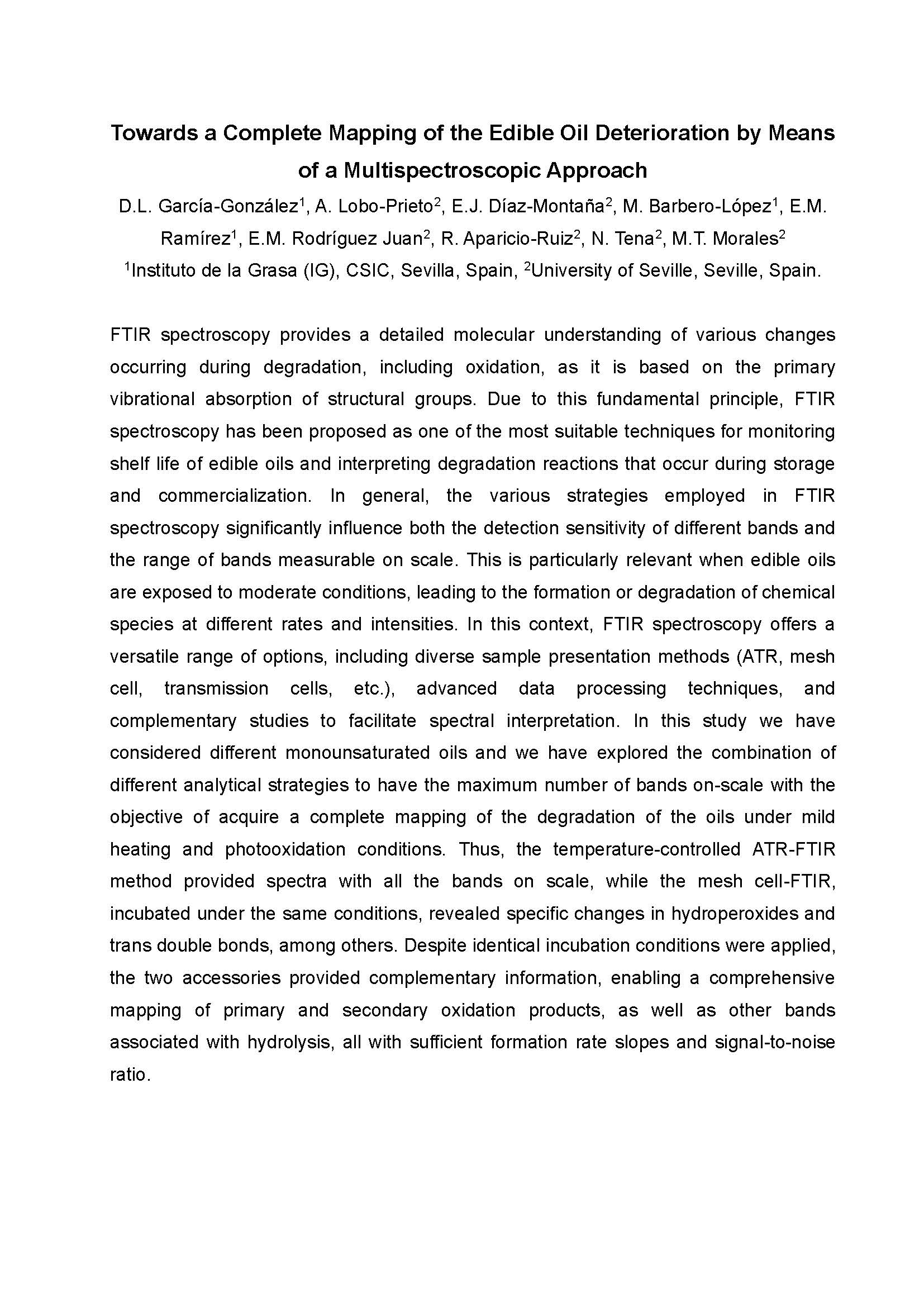FTIR spectroscopy provides a detailed molecular understanding of various changes occurring during degradation, including oxidation, as it is based on the primary vibrational absorption of structural groups. Due to this fundamental principle, FTIR spectroscopy has been proposed as one of the most suitable techniques for monitoring shelf life of edible oils and interpreting degradation reactions that occur during storage and commercialization. In general, the various strategies employed in FTIR spectroscopy significantly influence both the detection sensitivity of different bands and the range of bands measurable on scale. This is particularly relevant when edible oils are exposed to moderate conditions, leading to the formation or degradation of chemical species at different rates and intensities.
In this context, FTIR spectroscopy offers a versatile range of options, including diverse sample presentation methods (ATR, mesh cell, transmission cells, etc.), advanced data processing techniques, and complementary studies to facilitate spectral interpretation. In this study we have considered different monounsaturated oils and we have explored the combination of different analytical strategies to have the maximum number of bands on-scale with the objective of acquire a complete mapping of the degradation of the oils under mild heating and photooxidation conditions. Thus, the temperature-controlled ATR-FTIR method provided spectra with all the bands on scale, while the mesh cell-FTIR, incubated under the same conditions, revealed specific changes in hydroperoxides and trans double bonds, among others. Despite identical incubation conditions were applied, the two accessories provided complementary information, enabling a comprehensive mapping of primary and secondary oxidation products, as well as other bands associated with hydrolysis, all with sufficient formation rate slopes and signal-to-noise ratio.
